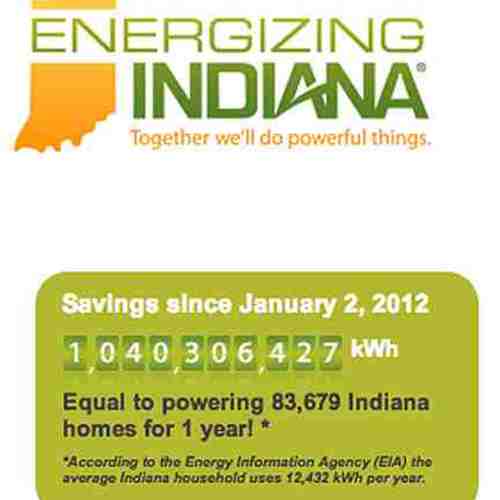
At a local Earth Hour party, the largest electric utility the area, Georgia Power, handed out “eco-friendly” tote bags made of vinyl recycled from its billboards. The company claims, “Each billboard can be used to produce approximately 150 tote bags.” Notice it says “can” rather than “is.” I would be interested to know how many bags were actually made from that recycled billboard. I mean, how many more tote bags do we need? I feel like I am buried in them, and they just keep appearing. They are the advertising specialty of the hour, having replaced beer cozies and refrigerator magnets. Are we going to have to set up special recycling centers for tote bags soon?
The real issue
I am as into marketing as the next person, so I can appreciate Georgia Power’s marketing department coming up with this idea and going through with it, and, in fact, creating a nice-looking tote bag that I will add to my collection. The real issue I have with it is that the company talks about sustainability and energy efficiency but does very little to promote it, and, in my experience, fights it tooth and nail.
As the largest single producer of electricity in the state, Georgia Power operates coal, nuclear, and hydropower plants throughout the Southeast. It has great influence over the state Public Service Commission, which sets rates and standards for demand-side management programs. As one of only two states in the country (Louisiana being the other) where the regulated are legally allowed to lobby their regulators, Georgia Power invests millions wining, dining, and persuading the commission members, the majority of whom virtually always side with the utilities. With rare exceptions, members of this commission seem to have lost sight of the fact that their titles start with the words “public service,” not “utility company service.”
Support for energy efficiency
Georgia Power recently took control of Home Performance with Energy Star (HPwES) locally, a solid, if struggling, program to improve efficiency in existing homes. At first glance, it appears that it has put serious effort and money into this program, offering rebates to homeowners for home assessments and both rebates and discounted financing for the improvements. On the surface, this seems to be an honest effort to promote the program; however the evolution of management leads me to believe that its motives are less sincere. After an initial announcement about the company’s involvement with the program in 2007, implementation moved at a snail’s pace. Not happy with only moving slowly, Georgia Power created one hurdle after another that limited professionals’ participation in the program.
Changing horses in midstream
Everyone that had been trained and approved to work as HPwES contractors through Southface Energy Institute learned that to take advantage of the Georgia Power benefits, they were required to take additional training and meet challenging insurance and staffing requirements. Every single employee, contractor, and subcontractor on participants’ jobs were required to have extensive general liability insurance and pass complete drug screening. While these requirements in themselves are not bad things, these contractors were faced with additional costs and management in an industry where they were barely able to sell their services for a profit to begin with. Residential construction has historically been a transient industry, and requiring that every employee pass individual screening before stepping on a job site runs somewhere between difficult and impossible. Georgia Power’s legal department, justifiably worried about liability for work that has the company name attached in our litigious society, developed these requirements to protect against liability. In the best of all possible worlds, we would be able to investigate and test every employee, but in the real world, that rarely works out.
The end result
The program as it currently operates has a total of 10 approved improvement contractors listed on its website to cover a customer base numbering in the millions. Contractor inquiries continue to increase, but no one is exactly banging down the participating contractors’ doors at this point. My preference would be to see Georgia Power spend less on putting up billboards and then making them into tote bags and more on developing a serious and effective demand-side management program that really reduces power usage. But I’m not holding my breath.
Weekly Newsletter
Get building science and energy efficiency advice, plus special offers, in your inbox.















One Comment
Carl,
This post had me
Carl,
This post had me reflecting in the midst of my HERS refresher course today here in California. I remember (fondly) back in my days at Southface in the shadow of the Georgia Power building and how we worked to evangelize green building and energy efficiency in a marketplace with the cheapest kWh in the nation. The grass always seemed 'greener' elsewhere, in terms of enlightened building standards and institutional support, be it governmental, utility, or otherwise (no offense GEFA!) (oh, and not counting places like Alabama, who didn't have a binding energy code).
Now that I'm here in sunny California, land of Title 24, Art Rosenfeld, and regulatory decoupling, it's strange how similar, and prevalent, the shortcuts are in the building process. We were going through countless slides of actual construction that some general contractor or HVAC sub tried to pass off as legit, and the pictures could very well have been Anytown, USA. In other words, the challenge of elevating building practice is hard enough with the Utilities really trying to help on the periphery (a la PG&E's wonderful Energy Center in San Francisco).
But with a dinosaur like Georgia Power taking over the HPwES program (no offense to the diligent few who are doing the best they can with it in GP), it smacks of the fox guarding the henhouse. What good did they think could come of it? Especially in the context of the false benchmarks of public benefit we can see that the PUC provides for them (keeping in mind their lobbying efforts)? They collectively reaffirm the myth that the race for the lowest cost per kWh is a public benefit, ignoring the expense of the environment, rural economies (see recent flooding caused from mountaintop removal), and with no attention for overall energy costs.
My work in California is in reality quite similar to my days as an EarthCraft House inspector, and I was spacing out in class whether or not I preferred the much more enlightened regulated utility environment I encounter here, or the motivation that the antagonism a sclerotic behemoth like the GP-PUC complex inspires. I think I'll stay here while I think about it.
keep up the good posting!
Log in or create an account to post a comment.
Sign up Log in